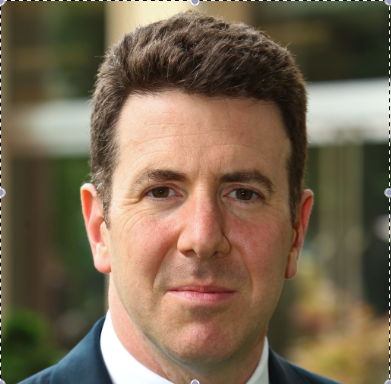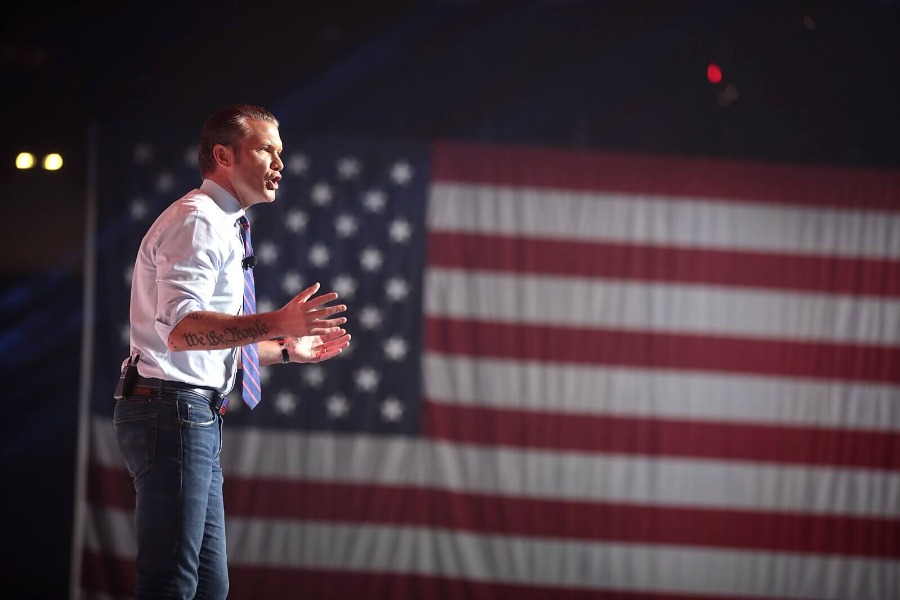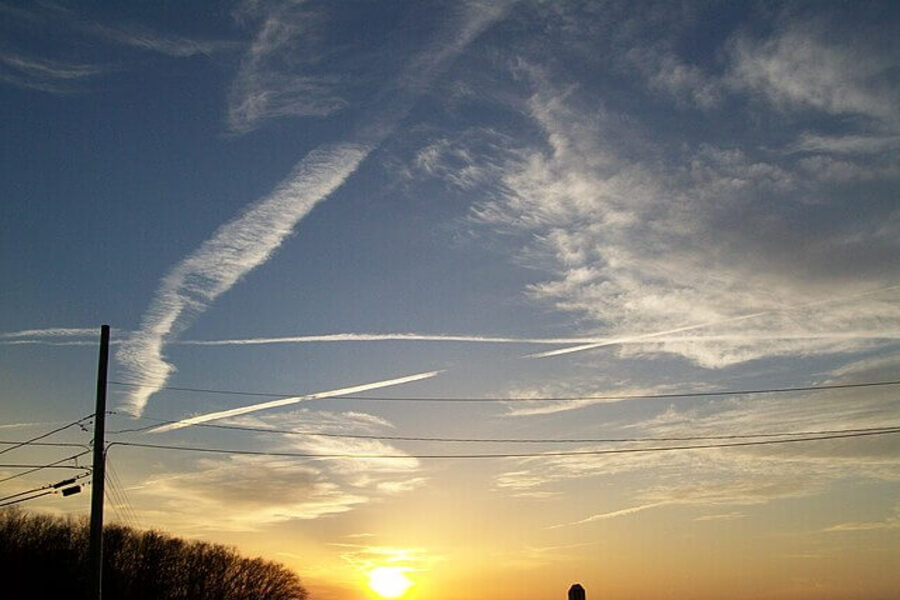Is Hezbollah Less Dangerous to the United States?
Get terrorism analysts around a bar (always a disturbing scene) and ask them which group is most formidable, and you’re likely to get a surprising answer. It’s not the Islamic State, or even Al Qaeda and its various affiliates. Rather, it’s the Lebanese Hezbollah, often darkly praised as the “A-Team” of terrorist groups, and the regularly trumpeted threat the group poses.
Published by The Lawfare Institute
in Cooperation With

Get terrorism analysts around a bar (always a disturbing scene) and ask them which group is most formidable, and you’re likely to get a surprising answer. It’s not the Islamic State, or even Al Qaeda and its various affiliates. Rather, it’s the Lebanese Hezbollah, often darkly praised as the “A-Team” of terrorist groups, and the regularly trumpeted threat the group poses.
In my view at least, however, the group’s strengths are often overstated in these conversations. This might be that rare bit of good news out of the Middle East: a formidable adversary is becoming less threatening to the United States and its interests.
Lest we get too optimistic, Hezbollah’s dangerous history should give us pause. Formed with Iranian money, arms, training, and other forms of support after the 1982 Israeli invasion of Lebanon while drawing on the fervor of the Lebanese Shi’a community following the 1979 Islamic revolution in Iran, Hezbollah had killed more Americans than any other terrorist group before 9/11. Even today, it is still far ahead of the Islamic State on this score. Its attacks on U.S. soldiers and diplomats in Lebanon in 1983 and 1984 killed hundreds. The Lebanese Hezbollah (along with a Saudi group with the same name) was also linked to the 1996 Iranian-orchestrated attack on the U.S. military barracks at Khobar Towers in Saudi Arabia, which killed 19 American soldiers. When the United States invaded and occupied Iraq, Hezbollah worked with Iraqi Shi’a militias that attacked U.S. soldiers and their Iraqi allies. Hezbollah has also long been active against America’s ally Israel, waging a border war against the Jewish state and attacking its facilities and citizens—and at times those of local Jewish communities—in Europe, Latin America, and Asia. After three decades, it has proven deadly on a global scale.
In the over 30 years since its formation, Hezbollah has become more than a terrorist group. It has long provided education, health care, and other services to its Lebanese Shi’a constituents, and over time it has become an important service provider to non-Shi’a Lebanese, winning political points throughout the country. In the 1990s, the group entered politics, becoming a major bloc in the Lebanese parliament and part of a coalition government in Lebanon. Finally, its struggle against Israel was broadly popular, and the group’s success in forcing Israel to leave Lebanon in 2000 won it admiration at home and abroad. Throughout all this time, Hezbollah remained close to its sponsors, Syria and especially Iran.
In 2006, a Hezbollah kidnapping operation spiraled into a month-long war with Israel: Hezbollah forces killed more than 100 Israelis, a large number for the casualty-sensitive Jewish state, though Hezbollah itself lost far more. Hezbollah rockets consistently rained down on northern Israel during the conflict, sowing panic throughout the country.
Yet it is Hezbollah’s latest activities that are alarming many experts. After the 2006 war, Hezbollah’s depleted rocket and missile arsenal was restocked and now numbers over 100,000. If that weren’t bad enough, Hezbollah’s dramatic moves in Syria are also causing concern. Hezbollah has 7,000 or so fighters deployed in Syria, where they are an important bulwark of the Assad regime and have been at the front lines against the Sunni-dominated opposition. In this process Hezbollah has moved even closer to Iran, which is also propping up the Assad regime, and the group has been given a new financial lease on life because of the unfreezing of assets after the Iran nuclear deal. In Syria’s bitter fighting, a new generation of Hezbollah fighters has gained valuable combat experience. Indeed, these fighters have developed new skills, learning how to coordinate with Syrian and Russian airpower, operate their forces on a larger scale than they did in Lebanon, and fight in difficult urban environments.
But a closer look suggests that Hezbollah is also facing problems on every front. In Lebanon, the group’s effort to portray itself as a champion of all Lebanese against the United States and Israel has suffered major setbacks. It no longer transcends Lebanon’s sectarianism and is now squarely on one side of the region’s communal conflict. Lebanese Shi’a still see the group as its champion, perhaps even more than before given the sectarian nature of the fighting in Syria, but many Lebanese favor the Syrian opposition and see Hezbollah as tyranny’s ally. Hezbollah has tried to portray its war in Syria as part and parcel of its struggle with Israel, but it has largely failed at this. Having lost more than 1,000 fighters in Syria, it is also under pressure from the families of the fallen to justify the sacrifice. Meanwhile, Sunni jihadists have conducted terrorist attacks on Hezbollah neighborhoods, bringing the war to Lebanon itself and shattering the group’s sense of invulnerability.
If Hezbollah’s prestige is suffering at home, it is plummeting in the broader Arab world. In 2006, after Hezbollah forces fought the Israeli army to a draw, polls showed the group’s leader, Hassan Nasrallah, was the most popular man in the Arab world. Egyptian newspapers ran full-page ads comparing him to Gamal Abdel Nasser, the lion of Egyptian nationalism, using the anniversary of Nasser’s defiance of the West during the 1956 Suez Crisis to draw the connection. Today, polls in several Arab countries show that almost 90 percent of their populations disapproves of Hezbollah, a staggering about-face. The Arab League and the Gulf Cooperation Council recently declared Hezbollah a terrorist group, prompting a storm of accusations and counterattacks. Twisting Hezbollah’s name, which translates as the “Party of God,” many Sunni critics have begun referring to it as the “Party of Satan.”
Hezbollah’s reputation is collapsing because of its prominent role in the Syria conflict. Most of the Arab world is Sunni, and many governments are responding to popular concern for their coreligionists and their own hostility to Hezbollah’s backer Iran, which presents itself as a champion of the region’s Shi’a Muslims. Hezbollah is particularly hated by the region’s Sunni jihadists, whose forces have clashed repeatedly with Hezbollah in Syria and regularly threaten dire consequences against the group. The enmity is fully reciprocated. Nasrallah recently declared the jihadists a more difficult problem than even Israel. Rather than try to rebuild bridges to Sunni powers, Hezbollah has doubled down on its relationship with Iran, sending some of its fighters to train groups in Iraq and Yemen.
Syria has damaged far more than Hezbollah’s reputation. Among the more than 1,000 dead in Syria are numerous senior commanders. To sustain the number of fighters in Syria, the organization has had to go beyond its elite core and expand recruitment, diminishing the quality of its personnel. In addition, many of its best forces are in Syria, fighting other Muslims, not preparing to square off against Israel, the organization’s raison d’etre. The strain of the war also breeds resentment in the ranks between those stationed comfortably in southern Lebanon and those forced into the meat-grinder next door. There is also potential for greater tension between the leadership in Beirut and the soldiers on the frontlines fighting a seemingly endless war.
Hezbollah remains capable of inflicting grievous harm on Israel, and in that sense is more dangerous than ever before. But, so far at least, deterrence between Hezbollah and Israel seems stable. The border has been mostly quiet since the 2006 war. Ten years of calm is an eternity in the Middle East, and even the last tremendous clash seems more a result of Hezbollah’s miscalculation about where Israel’s redlines were, rather than an actual desire to take on the Israeli military juggernaut.
For the last decade, Israel has been preparing for another round with Hezbollah, and the group’s leaders, no fools, rightly fear the destruction Israel threatens to unleash. But Hezbollah’s military skill and rocket forces also give Israel pause: peace holds because of mutual fear, not a lessening of tensions. Hezbollah itself now speaks the language of game theory, its “ability to cover the entirety of occupied Palestine with missiles,” Nasrallah declared, “acts as a deterrent for the third Lebanon war.”
We should be under no illusions: Hezbollah remains formidable, and it is no American friend even though it is fighting the Islamic State and other jihadist groups. Hezbollah’s anti-Americanism, however, is tempered by the many other threats the group faces. In a turbulent Middle East, the names on its list of enemies may change in their rankings. But given that the Middle East’s Sunni jihadist problem and sectarian competition show no signs of abating, Hezbollah is likely to have its hands full. And that’s good news for America.




